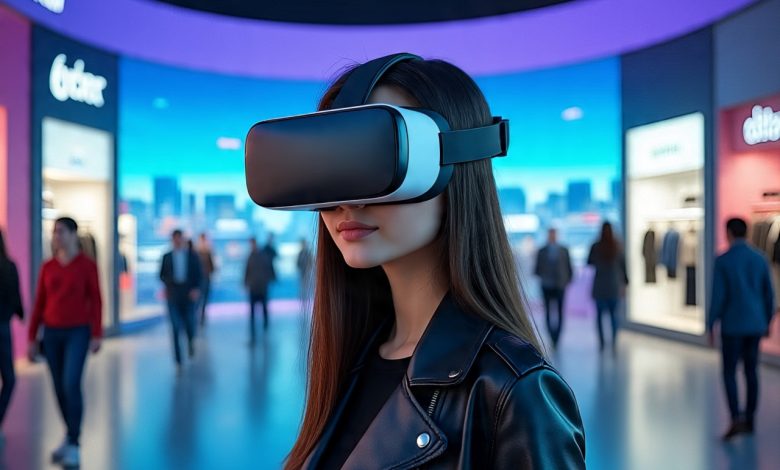
- 1. What Is Virtual Reality Shopping and How Does It Work?
- 2. Why Virtual Reality Shopping Is Gaining Real Traction
- 3. Real Benefits of Virtual Reality Shopping for Consumers and Retailers
- 4. Key Technologies Behind the VR Shopping Experience
- 5. Challenges and Ethical Concerns of VR Shopping
- 6. Will VR Shopping Replace Traditional E-Commerce?
- 7. How I Think Small Businesses Can Enter Virtual Reality Shopping
- Conclusion
I’ve been in the digital space long enough to witness countless transformations in the world of e-commerce—but none as exciting as Virtual Reality Shopping. What once seemed like a sci-fi dream is quickly becoming a reality, and as someone who’s obsessed with both SEO and emerging tech, I couldn’t ignore it. I’ve spent the last few months researching how virtual shopping is evolving and, more importantly, what it means for consumers, retailers, and digital marketers like me.
This blog post isn’t just another “VR is cool” article. I wrote it to share real insights, explain how this tech is actually changing how we shop, and to help readers (maybe like you) understand where the online marketplace is headed. If you’re serious about the future of digital retail—or you just want to stay ahead—this deep dive is for you.
1. What Is Virtual Reality Shopping and How Does It Work?
At its core, Virtual Reality Shopping is a way to experience a physical-like store from the comfort of your home using a VR headset or device. Instead of scrolling through product images on a flat screen, you walk through virtual aisles, pick up 3D items, and even “try on” clothes or preview furniture in your space—all in a simulated environment.
Here’s a quick breakdown of how it works:
| Component | Function |
|---|---|
| VR Headset | Creates the 3D immersive environment |
| Motion Sensors | Tracks user movement to allow navigation and interaction |
| Virtual Storefront | Simulates a real retail experience with product shelves, customer service bots |
| Integrated Payment | Allows secure in-VR checkout using e-wallets or credit cards |
Guide: If you’ve ever used IKEA’s augmented reality app to preview furniture in your room, think of VR Shopping as the full upgrade—walk through the store, see how it feels, and make better decisions, all virtually.
2. Why Virtual Reality Shopping Is Gaining Real Traction
I used to think VR shopping was just a cool gimmick. That was until I saw how seriously major brands are investing in it. Companies like Walmart, Nike, and Alibaba are already experimenting with VR stores. And here’s why it’s working:
-
Better User Engagement: According to Statista, the global VR/AR market is projected to exceed $250 billion by 2028.
-
Fewer Returns: Shoppers can “experience” the product more realistically, reducing disappointment.
-
Greater Accessibility: For people who live far from urban centers or have mobility issues, virtual shopping is a game-changer.
As someone who’s been optimizing e-commerce sites for over a decade, I can tell you: attention spans are getting shorter, and customers expect more immersive, personalized experiences. Virtual Reality Shopping isn’t just a trend—it’s an answer to that demand.
3. Real Benefits of Virtual Reality Shopping for Consumers and Retailers
Let me share both sides of the coin—why it works for customers and why businesses are jumping on board.
For Shoppers
-
Immersive Experience: Instead of clicking and guessing, you can see and interact with products.
-
Try Before You Buy: Want to know if those sunglasses suit your face? Just try them on virtually.
-
Social Shopping: Some platforms even allow you to shop with friends in VR.
For Businesses
-
Deeper Analytics: Track how customers navigate stores and what they’re drawn to.
-
Brand Loyalty: A fun and interactive store keeps customers coming back.
-
Global Reach: Open a virtual store and instantly reach customers across the globe—no shipping needed.
Pro Tip: From an SEO perspective, businesses offering VR shopping experiences can gain natural backlinks, user engagement, and long dwell times—all of which help in ranking better on Google.
4. Key Technologies Behind the VR Shopping Experience
This section is a must if you’re as geeky as me about what’s under the hood. Here are the technologies making Virtual Reality Shopping possible:
-
3D Modeling Tools: Platforms like Unity and Unreal Engine help create life-like objects and environments.
-
Eye Tracking & Hand Gestures: These allow intuitive navigation and real-time interaction.
-
AI and Machine Learning: Personalize shopping based on behavior and preferences.
-
Blockchain: Some virtual stores now support NFT-based purchases and blockchain verification for digital items.
Note: One fascinating example is the collaboration between Meta and Ray-Ban, where you can try on glasses virtually before ordering them. It’s no longer about imagining—it’s about seeing.
5. Challenges and Ethical Concerns of VR Shopping
Okay, here’s where I get real. While I love where things are heading, I also worry about a few things:
-
Data Privacy: VR stores track eye movements, gestures, and even emotional reactions. Where does that data go?
-
Addiction and Overconsumption: Gamified shopping experiences can push users to spend more than they should.
-
Digital Divide: High-quality VR gear isn’t cheap. It may exclude low-income groups for now.
We need to keep an eye on this. The Federal Trade Commission has already issued statements about data use in immersive tech environments.
Quick Tip: If you’re planning to build a VR store, make sure your privacy policy is bulletproof. Include opt-out mechanisms and get explicit consent for data tracking.
6. Will VR Shopping Replace Traditional E-Commerce?
Short answer: not anytime soon. But will it change the landscape? Absolutely.
Traditional e-commerce will still dominate due to its accessibility, but Virtual Reality Shopping will become a powerful add-on for premium experiences, high-involvement purchases (like furniture, fashion, cars), and brand storytelling.
Example Use Cases:
| Product Type | Best-Suited Experience |
|---|---|
| Clothing | Virtual try-ons |
| Home Decor | Room previews in VR |
| High-End Fashion | Virtual Runways + Fittings |
| Electronics | 3D Demos and Tutorials |
7. How I Think Small Businesses Can Enter Virtual Reality Shopping
You don’t need a billion-dollar budget to dip your toe in VR.
Here’s what I recommend (based on what I’ve done myself):
-
Start with 360° product views on your website.
-
Use free or affordable AR plugins like Shopify’s AR tools or WebAR from 8thWall.
-
Partner with freelancers on Fiverr or Upwork to build basic virtual environments.
-
Explore platforms like Obsess, which helps smaller businesses create virtual stores affordably.
Guide: I always suggest small businesses begin with AR-first experiences, then gradually scale toward VR as their customer base warms up.
Conclusion
I’ve tested this tech. I’ve shopped in it. I’ve even helped a local boutique launch a simple VR showroom—and let me tell you, the response was incredible. Customers loved the novelty, and it doubled their average session time.
In my honest opinion, Virtual Reality Shopping is not a replacement but an evolution of how we buy. If you’re a shopper, it gives you power. If you’re a brand, it gives you a new way to build loyalty. And if you’re like me—someone watching how SEO, tech, and e-commerce intersect—this is one wave you can’t afford to miss.
FAQs
1. What is Virtual Reality Shopping?
Virtual Reality Shopping is an immersive retail experience where customers use VR headsets or devices to explore virtual stores. Instead of scrolling through flat product images, shoppers can walk through virtual aisles, pick up 3D items, and even try on clothes or preview furniture in their homes.
2. How does Virtual Reality Shopping work?
It combines hardware and software components:
-
VR headsets create the 3D environment.
-
Motion sensors track user movement for navigation.
-
Virtual storefronts simulate real stores with interactive products.
-
Integrated payment systems enable secure checkout.
3. Why is Virtual Reality Shopping becoming popular?
Brands like Walmart, Nike, and Alibaba are investing heavily because VR shopping improves user engagement, reduces return rates, and increases accessibility for people in remote areas or with mobility challenges.
4. What are the benefits of VR shopping for customers?
Customers enjoy immersive product exploration, virtual try-ons for fashion and accessories, and social shopping with friends in VR environments.
